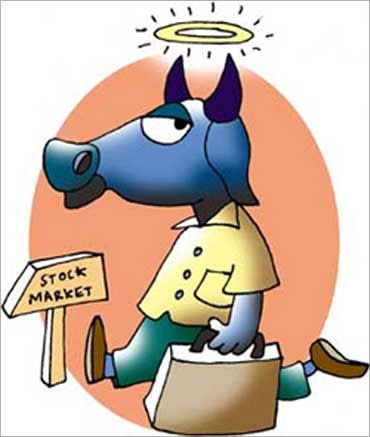Monsoon session of Parliament expected to be stormy and likelihood of GST Bill and Land Bill getting passed are slim
 Financial markets have had a lot to contend with over the last few months. Be it the sharp sell-off in Chinese equities or fears of a possible contagion, following a default by Greece, the world's financial markets remained under pressure.
Financial markets have had a lot to contend with over the last few months. Be it the sharp sell-off in Chinese equities or fears of a possible contagion, following a default by Greece, the world's financial markets remained under pressure.
In addition to the global risks, Indian equities have had to contend with risks emanating from a potentially weak monsoon. While most of the global risks appear to have abated, there are few fresh triggers for Indian equities.
Even though the Sensex has risen by 6 per cent over the last one month, there are no new triggers for the market. For starters, the monsoon session of the Parliament is expected to be stormy and the likelihood of the GST Bill and Land Bill getting passed are slim.
Even though government spending on infrastructure projects picked up in April and May, it is not sufficient to kick off growth. The market's valuations also appear to be full.
At current levels, the broader markets are trading at 18 times FY16 earnings. Strategists believe there is little room for a sustained upward move without a new trigger.
The Street has been building in a revival in the investment cycle, led by government spending. Even though the government's capital expenditure was higher in April and May than in the past years, Kotak Institutional Equities is refraining from reading this as a trend.
Economists believe that government spending alone cannot revive growth. For a sustainable revival in investments, reforms in the banking sector are inevitable.
Bank of America Merrill Lynch says its lead indicators (comprising cash demand, loan growth, industrial output, earnings, construction, traffic, telecom subscribers and capex) have not seen any improvement since August 2014, when they signaled that growth was bottoming out from bottoming in early 2012.
The buoyant mood in the market has not managed to lift either earnings growth or investments. With government cutting back on spending sharply in FY15, full year growth was crimped.
With no sign of any pick up in the economy, economists are now veering around to the view that only consumption can revive growth. Bank of America Merrill Lynch believes consumption could be driven by lower interest rates, increase in central government pay, higher support prices for wheat.
Strategists and economists believe a rate cut is likely as global commodity prices remain benign, especially oil. Effective management of food prices coupled with lower oil prices could give the Reserve Bank of India the requisite room to cut interest rates further.












 © 2025
© 2025